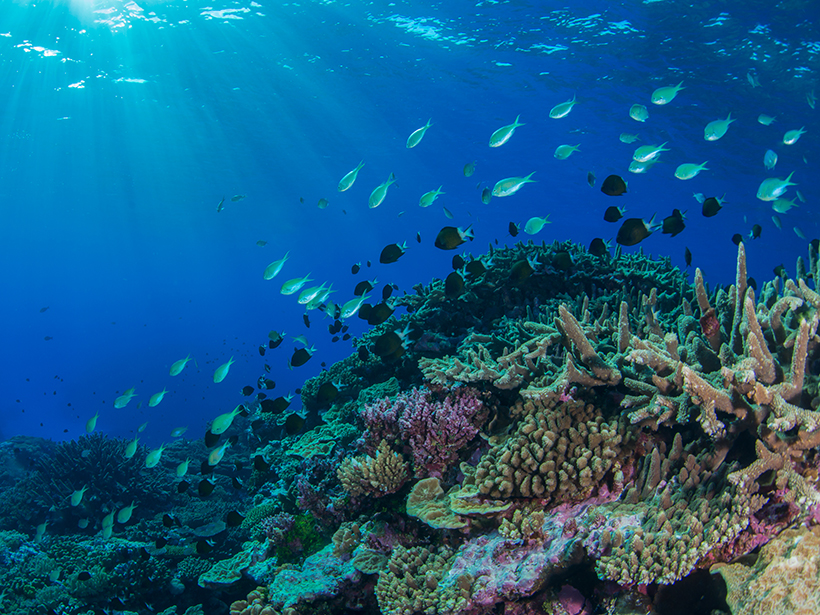Extreme heat pushed even resilient corals in the Great Barrier Reef to the brink, limiting recovery.
Great Barrier Reef
Making Sense of the Great Barrier Reef’s Mysterious Green Donuts
Researchers set sail to the Great Barrier Reef to study how ring-shaped algae deposits formed and evolved, what feeds them, and the diversity of creatures that call them home.
Sea Cucumbers: The Excremental Heroes of Coral Reef Ecosystems
Drone surveillance reveals just how big a contribution sea cucumbers make to reef habitats.
Dead Reefs Keep Calcifying but Only by Day
A new measurement technique has revealed that turf algae communities colonizing dead reefs have a dual role, adding new mineral material to the reefs during the day and taking it away at night.
The Effect of Coral Bleaching Events in the Great Barrier Reef
A new study using seawater chemistry compares the status of the iconic reef before and after a bleaching event.
Heat Waves, More Than Coral Death, May Cause Fish to Flee Reefs
A study over a broad swath of the Great Barrier Reef shows that warming waters directly cause fish and invertebrates to leave the reef, making it harder for coral to recover from bleaching events.
Corals Reveal Ancient Ocean Temperatures in Great Barrier Reef
Old coral colonies suggest that a prehistoric warming event called the mid-Holocene Thermal Maximum may have occurred earlier than previously thought.







